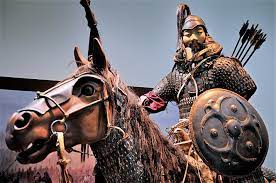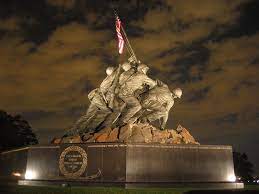Paleoanthropologists have made a study on the comparison of the structure of the teeth of ancient Native Americans and Japan during the Jomon period of its history. They studied the morphology of the teeth of the Ainu people and other Japanese people who lived during the Jomon period in Japan. Based on their study, they debunked the theory that the settlement of the Americas involved people from ancient Japan. This hypothesis had been based on the similarity of tools made of stone which had been discovered in various sites.
Also, the researchers encapsulated the results of paleogenetic studies and concluded that the links between the Jomon population of Japan and the modern population of North America could be seen only among some of the modern people living in the Arctic region.

Debunking of old theories about the settlement of America
There is a great deal of debate among researchers about the timing and routes of settlement in the Americas. For long, many of the early Native American populations were linked to the Clovis archaeological culture which had spread in North and Central America around 13,500 to 10,800 years ago. However, new research has revealed fresh proof of human settlement in the region in an earlier era.
Today it is thought that the settlement of the Americas occurred in numerous waves. The first of these waves took place around 30,000 years ago, the second wave took place during the last glacial maximum, and the third wave took place during the Greenland interglacial.
Excavations in the west of the state of Idaho in the Columbia River Basin led to the discovery of an ancient site there by archaeologists. The site is believed to have been first peopled some 16,000 years ago. The researchers found animal bones and stone tools like double-sided hand choppers, blades, and stone flakes which differed quite a lot from the Clovis culture.
However, similar artifacts have been discovered in Northeastern Asia, including the Japanese island of Hokkaido, and date back to the early Jomon period. This led to the hypothesis that Native Americans could be related to the ancient peoples of Japan.
Research, Similarity, and Differences
Researchers from the US, Spain, and Russia carried out a study on the history of early human settlements in the Americas. For this, they compared the teeth of the ancient Native Americans and Japanese of the Jomon period using the rASUDAS program. According to them, the morphological characteristics of the crown and the root of the teeth may help in revealing the evolutionary history of humanity.
In the research, the scientists used a database that had been collected over many decades by the American anthropologist Christie Turner. The study of 21 teeth of the Ainu and other Japanese people from the Jomon period showed their similarities in many features and differentiated them from other people in Asia, the Pacific Ocean region, and the Americas.
The researchers also found numerous differences in the morphology of teeth between the ancient Japanese and the Native Americans, which according to the shows the absence of any familial relations between them. The people who were most related in terms of similarity of features to the Ainu people and other Japanese of the Jomon period were the Australoid-Melanesian people.
The researchers also carried out an analysis on the genetics of the ancient people of Japan and the Americas. This research on the mitochondrial DNA samples from a population in the Jomon period in Hokkaido showed that maternal bloodlines from Ancient Japan were not found in modern or ancient peoples of the Americas. The most common mitochondrial haplogroup N9b was found in some modern peoples of Siberia but was rare in East or Southeast Asia.
Interpretations
Researchers have seen that the less common haplogroup D4 was limited to the Arctic peoples of North America and Chukotka in far-eastern Russia. The rare D4h3a haplogroup remotely linked some Native Americans to the Japanese of the Jomon period. Other studies of genomes also show a 95 percent probable inconsistency between the Native American and ancient Japanese people from 36,400 to 26,800 years prior.












